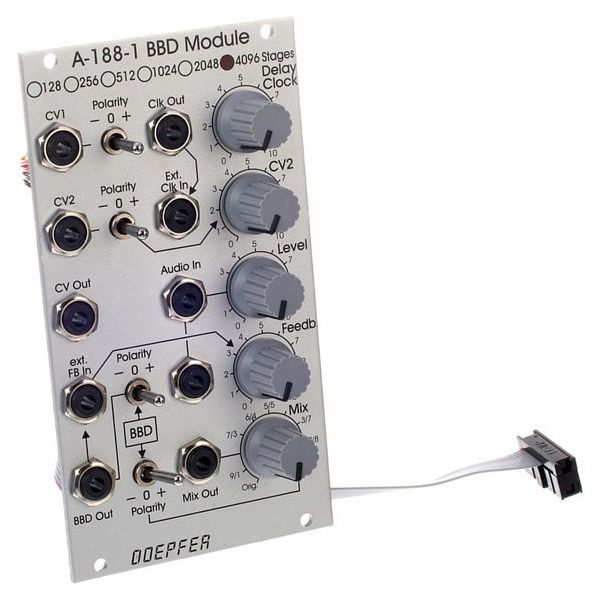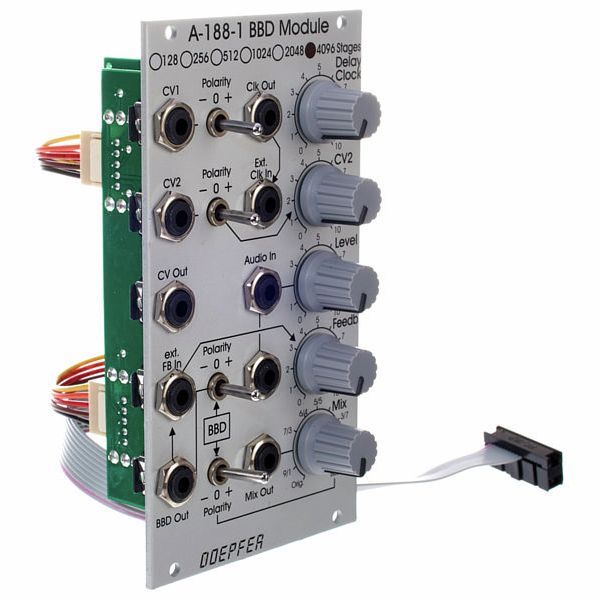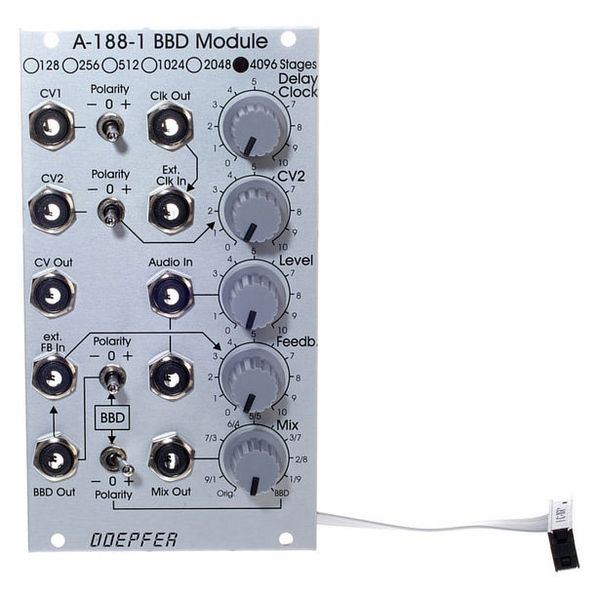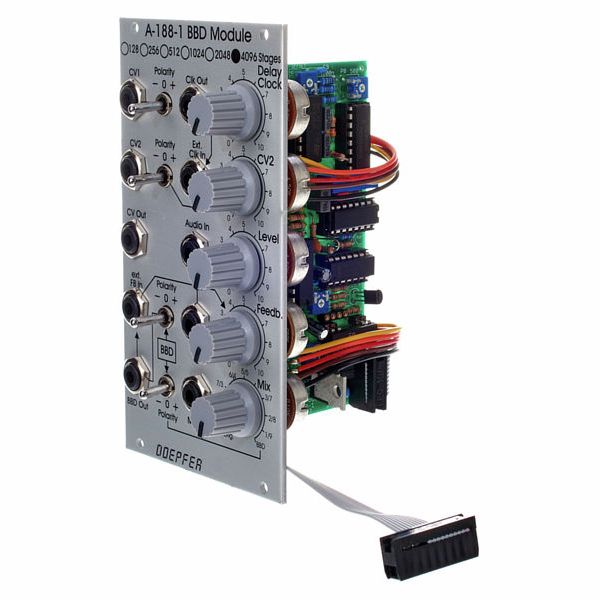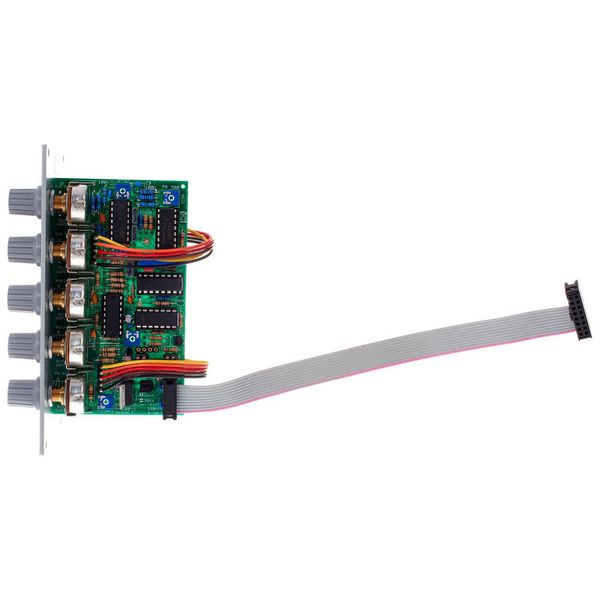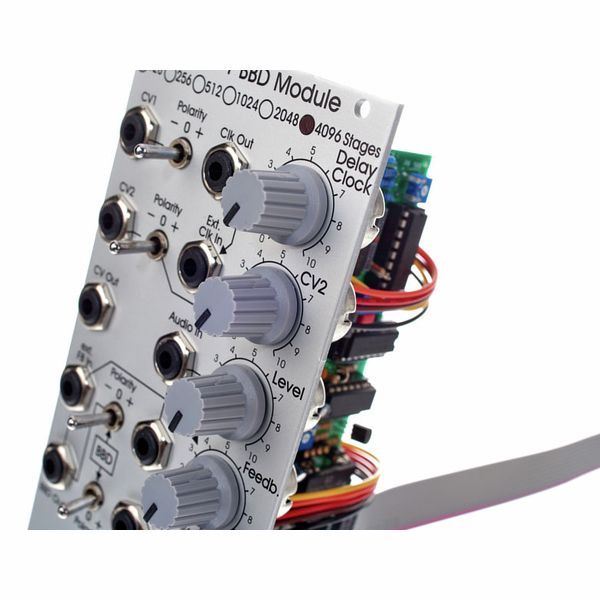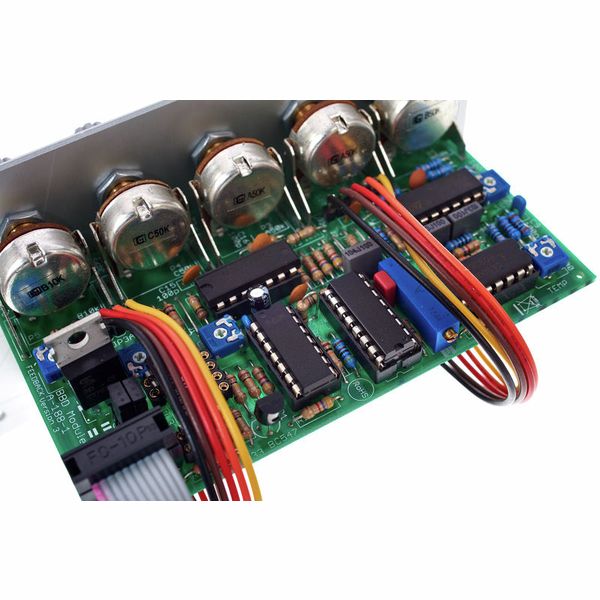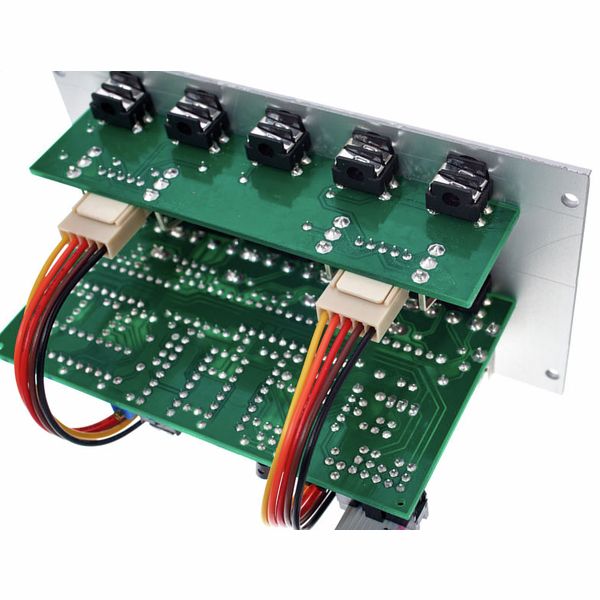Brigade Device Module
BBDs are used to delay audio signals before digital delays are able to deactivate the BBD-generated effects. BBDs have some very unique advantages (or disadvantages - depending on the point of view) over their digital counterparts, a result of some of the special properties inherent in BBDs. BBD circuits can be treated as a chain of Sample & Hold units (S H), which pass on their voltages to the next S&H in the chain at each clock pulse.
The sound produced by the A-188-1 module is very special indeed. Typical applications include: Flanger, Chorus, Analog Delay or Karplus / Strong Synthesis. As the A-188-1 has a lot of unique features (voltage controlled clock rate / delay time with extreme range, polarity switches for CV inputs, feedback and BBD Out/Mix, clock and CV high speed VCO output, BBD clock input, feedback insert, feedback to self-oscillation), it's not at all unfeasible to discover many unusual applications, e.g., delay controlled by ADSR, envelope, random or sequencer with positive or negative effect.
- For the A-100 modular system
- High-speed VCO (HSVCO) section
- BBD / Audio section
- Power requirement: +80 mA (+12V) / -50 mA (-12V)
- Width: 14 TE / 70.8 mm
- Depth: 60 mm (measured from the back of the front panel)



